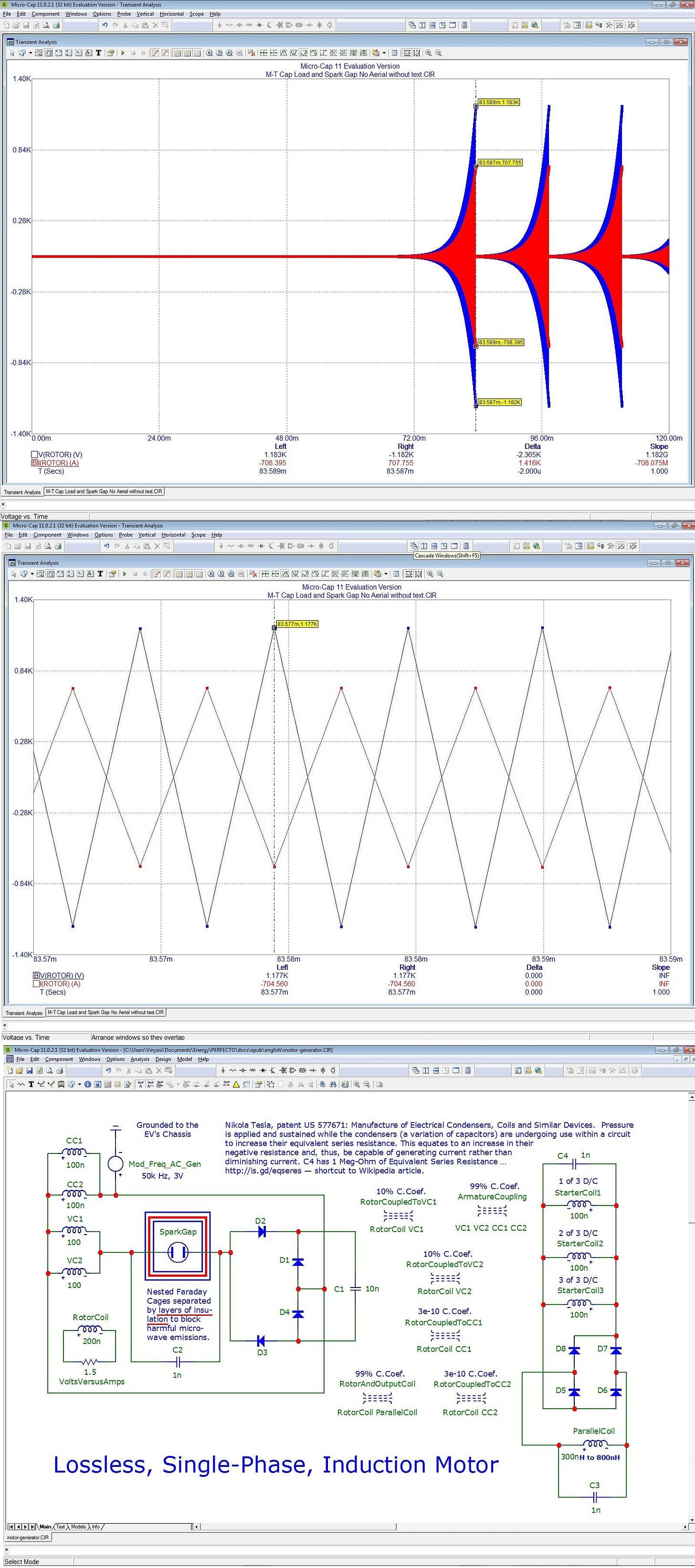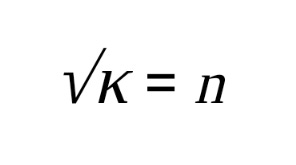Finally, a Straightforward Explanation for the Synthesis of Electricity!
My thanks go to Eric P. Dollard, Peter Lindemann and Aaron Murakami for making my epiphany possible.
The Synthesis of Electricity from its constituent ingredients of dielectric lines of force engaging magnetic lines of force within a framework of time driven by the behavioral characteristics of a Constant Current Source initially adjusted by a meager input of Potential suddenly or gradually transitioning into a massive adjustment of potential (which has been mislabeled as “free energy”) the end result of which is a significant increase of potential at a cost of very little potential to begin with.
I merely watched the first hour of this two- and one-half-hour video before coming to the following conclusions…
Capacitors are not sold below one pico Farad because once they get very low in capacitance, then they stop being capable of absorbing a charge and holding the charge and discharging the charge and they also stop having a time delay for absorption and discharge and (instead) become a prism capable of refracting current through their dielectric medium (having become a prismatic medium — please see my previous posts for reference, below) and reflecting voltage at 180° out of phase to the current causing them to convert what would otherwise be the consumption of power into the generation of negative power without creating the energy — just by converting it from a power factor of positive one into a power factor of negative one, namely: convert watts into negative watts. Consequently, coils of wire are not allowed (by these funky low-level capacitances) to accept this format of energy and (so) they never reach saturation when this current approaches these coils, because they don't absorb it either (in the traditional sense at any rate). For some reason, beyond my understanding, coils are needed to finish this process without which this benefit of capacitors could not be finalized.
The significance of this procedure is that the behavioral characteristic of the consumption of energy is that we lose it once it's spent it's gone! But negative watts cannot be spent and it cannot be lost. In other words, it does not go away; it simply accumulates. But it also provides a momentum in which the more negative watts which accumulates, then the faster it accumulates becoming an exponential rate of accumulation eventually reaching explosive proportions of expansion if not checked by regulatory mechanisms built into such a free energy circuit to prevent this runaway escalation of unbridled power.
I’m thinking of the braking “C” shaped permanent magnet whose north and south poles hover close to the opposite surfaces of the perforated aluminum disk which rotates inside of an electromechanical watt-hour meter, the I-10, from General Electric (built in 1910) as explained in the Meterman’s Handbook from 1912. Without this braking action, the aluminum disk would have escalated its rate of rotation until the jewel bearings of its brass spindle would break down and probably jam the rotation of that disk.
So, I guess this “C” shaped permanent magnet is serving as a magnetic load applied to what otherwise would have been an unloaded motor? (A nod to Jim Murray's presentation of “Fundamentals of the Transforming Generator” during the 2016 summer conference in Hayden, Idaho.) 1
The simplest way of making use of negative watts is to pass it through a resistive load such as a light bulb which was demonstrated by Jim Murray and Paul Babcock during the 2014 conference. They couldn't show off their circuit at that point in time but four years later they received a patent, and they called it their S.E.R.P.S. technology. 2
It may be possible to use a more complicated procedure in which two coils are counter-wound so that the amperage of one coil can match up with the voltage of its partnered coil and the voltage of the first can match up with the amperage of the second insofar as utilizing their magnetic fields to perform this blending so as to create positive watts out of negative watts. This is speculation on my part because I've never seen it happen. But it sounds logical. So, what do I know?!
Thanks guys! You just gave me another insight when you describe constant current source and then I asked AI over at Google to explain it to me (again) so as to repeat what you said so that I could read it and reread it over and over again and then I got it! 3
In which…
Free energy is when the circuit starts to convert the consumption of its power into its generation of power in as much as the circuit becomes a constant current source in which: if you put the impedances in the right place, then you get a rise of voltage with a consequential rise of current lagging behind that rise condition of voltage far behind — like, a thousand times more voltage than current in terms of units of voltage versus units of amperage or even greater than a thousand to one. But that's because you put the impedances in the right place. But if you put the impedances in the wrong place, then it becomes similar to a shorted condition in which the circuit goes comatose and hardly anything happens because it's trying to maintain its magnitude as it functions as a current source.
This has been the case regardless of whether or not you have a voltage source in the circuit providing a constant source of voltage! You could have a pre-charged capacitor charged with a microvolt and it quickly dies out. Yet, the circuit (apparently, according to what I'm getting from what you're saying) has become a constant current source. And (so), it builds up voltage because the impedances were put in the right place to accumulate voltage and any movement of currents we could almost call a leakage, because it's so small relative to the voltage unless this disparity between the amplitude of voltage and the amplitude of current is transformed by its passage into a third location in which a proper resistance is applied to realign the voltage and current into more reasonable values of proportionality after having been transferred from two other locations (one of which was high voltage with low current and another which is high current versus low voltage) to eliminate the extreme disparity between the two values.
The reason why negative watts makes it possible for this type of generator, namely a combination of low capacitance capacitors coupled with high inductance inductors, is because the current can never saturate the coils because the voltage could never be stored in the capacitors because of the nature of this negative watts is so diametrically opposed to each other — the phase of current from the phase of voltage — that the electrical components, such as capacitors and coils, can no longer operate in the usual manner. So, they cannot store the energy at all.
And (so), because they cannot store the energy, then not only is there no time delay but there is no variation of current. The current remains the same because it has never been stored within the coils, nor has the voltage been stored and released within the capacitors.
In fact, the capacitors are so low in capacitance that they refuse to accept any voltage reflecting it back to wherever it came from at 180° of reflection. Yet, the capacitors make allowance for the current to pass through them, because this type of capacitance cannot see the current. It only sees the voltage and refuses it!
Meanwhile, the coils refuse to accept the current, since it is not affiliated with any voltage to push it through the coils, and so they never become saturated because, I suspect, the skin effect takes place (or something similar), causing the current to shimmy along the outside of the coil rather than pass through its interior. I don't know...?
The coils are the last peg in this puzzle to somehow make it possible for free energy circuitry to become a constant current source backed up by the capacitors functioning as prisms.
So, there's still a few missing pieces to this puzzle. But it's starting to fall into place very quickly — all because of the brilliant role models which Eric Dollard and Peter Lindemann and Aaron Murakami are. They're great role models to inspire brilliant thinking because they're brilliant. So, hopefully, some of it (a little bit of it) rubs off on the rest of us.
I figured out the missing puzzle...
Since the voltage has been turned around 180°, it comes around to the opposite side of the coil just when the current is trying to enter from the other side and this voltage opposes that current with the exact same amount that it used to supply the backup-force to push the current along (prior to the polarity of this voltage having become inverted by its reflection from off the low-level, prismatic capacitors). Consequently, this opposing voltage prevents the current from entering the coil at all! So, it's no wonder that the coils never saturate because the current never enters the coils just as the voltage never enters the capacitors. Everything else is blind to these two types of components and passes right through them as if those components were not there and also as if, from the standpoint of the components, the current is invisible to the capacitors and the voltage is invisible to the coils — which was probably the case all along, anyway. So, the very thing the coils needed to store, namely: current, they cannot absorb because they're being forced by voltage from the opposite terminal of the coil to push against the current to prevent it from entering the coil. Meanwhile, the capacitors refuse to store any voltage because of the low-level of capacitance turning those capacitors into prisms bouncing the voltage off of those capacitors at 180° direction of inversion.
Thus, nothing travels anymore. There is no throughput. We get something like a standing wave of spikes in as much as nothing travels anymore.
As an aside, when the virtual oscilloscope tracing of the simulator spreads these spikes far enough apart in time, then they begin to look like triangle waves, but they're really spikes.
Please see the second image in the following stack of three images which are part of a message thread I started over at AllAboutCircuits [archived from a cross-posting at StackExchange]…
And (so) everything (the spiked phases of current diametrically out of phase with the spikes of voltage by 1/2 cycle of phase displacement between each other as depicted in the second screenshot, above) arises everywhere at the same time and exponentially growing in amplitude and slightly growing in frequency.
The following image is an explosively, parasitic oscillation to be sure.
For reference…
The Refraction of Current vs the Reflection of Voltage
I meandered around too much in the prior two podcasts when all I had to do was quote A.I., verbatim!
The Dielectric Constant versus the Refractive Index
The square root of the dielectric constant (κ) is equal to the refractive index (n) …
Resistance versus Reactance
In the following dialogue between myself and A.I. over at Bing Copilot, it takes a long time for me to realize that A.I. has made a mistake and in what manner has the mistake been made. But to its cr…








